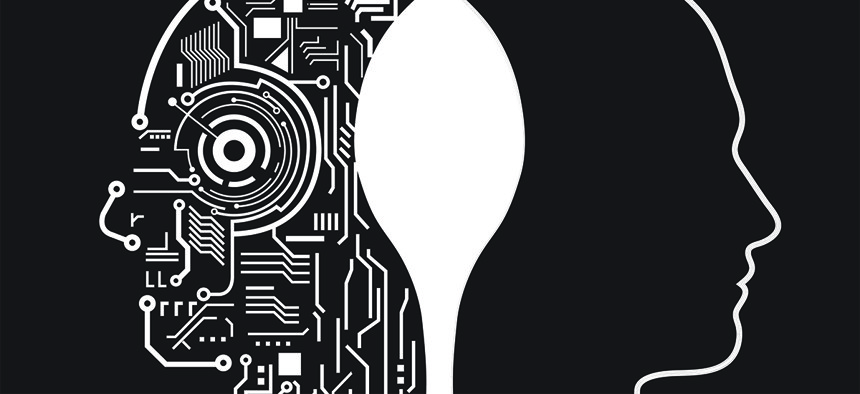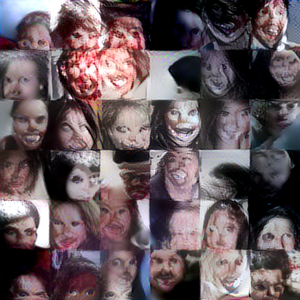Researchers Are Teaching Artificial Intelligence How to Terrify Humans

razum/Shutterstock.com
Can machines learn to scare us?
Machines do creepy things all the time. The more they seem to be able to think and act for themselves, the freakier it gets.
Consider, for example, this gif I just made of Boston Dynamic’s SpotMini robot. Legitimately impressive? Of course. Terrifying? Also yes.
But SpotMini’s just trying to do its thing. It can fetch you a beer! And load the dishwasher! Who cares if it also sometimes does that weird thing where it walks in a circle around its own head?
Especially when there are machines out there actively trying to terrify you. That’s the idea behind the Nightmare Machine, a deep-learning project by researchers at MIT who wanted to see if they could train a computer to generate horrifying images.
To do so, they trained an algorithm on a corpus of the kinds of images they wanted it to produce. They were going for a few different aesthetics: the hazy appearance of the sky above a haunted house, the unsettling palette of a cityscape drenched in toxic waste—you know, the sorts of scenes that might evoke witchy-fingered tree branches scraping on your window after midnight and ghostly disturbances in your peripheral vision.
So far, the algorithm seems to be doing a pretty good job.
The images being produced aren’t just otherworldly or psychedelic, like so many computer-generated images in the realm of machine learning, but straight-up spooky. For example, check out how the Nightmare Machine transformed an ordinary image of the Statue of Liberty into something out of Ghostbusters. (There is no Lady Liberty, only Zuul!)


Or how it makes a photo of the Louvre look like it’s been transported to a terrible Parisian hellscape:


It gets scarier, though. More unsettling than these landscapes are the ghoulish algorithm-generated faces that the Nightmare Machine has churned out.

To refine the algorithm, researchers are asking humans to vote on which faces are scariest. (Though, as someone who can’t get through a horror flick without turning down the volume and googling what’s about to happen, I voted “scary” on all of them.) You can go to the Nightmare Machine website to participate.
“Creating a visceral emotion such [as] fear remains one of the cornerstones of human creativity,” the researchers wrote on their website. “This challenge is especially important in a time where we wonder what the limits of artificial intelligence are: Can machines learn to scare us?”
For me, anyway, the answer is yes.





